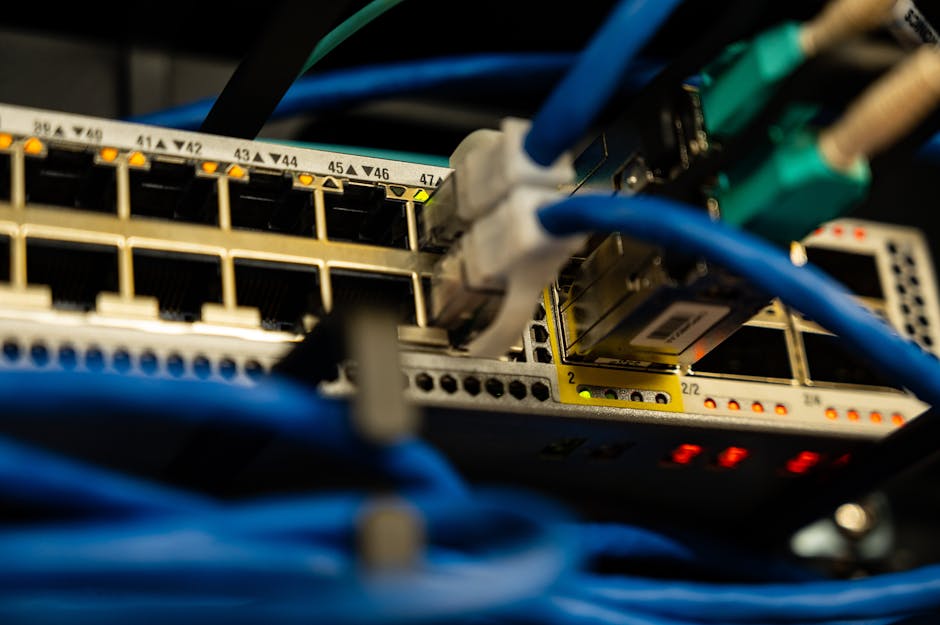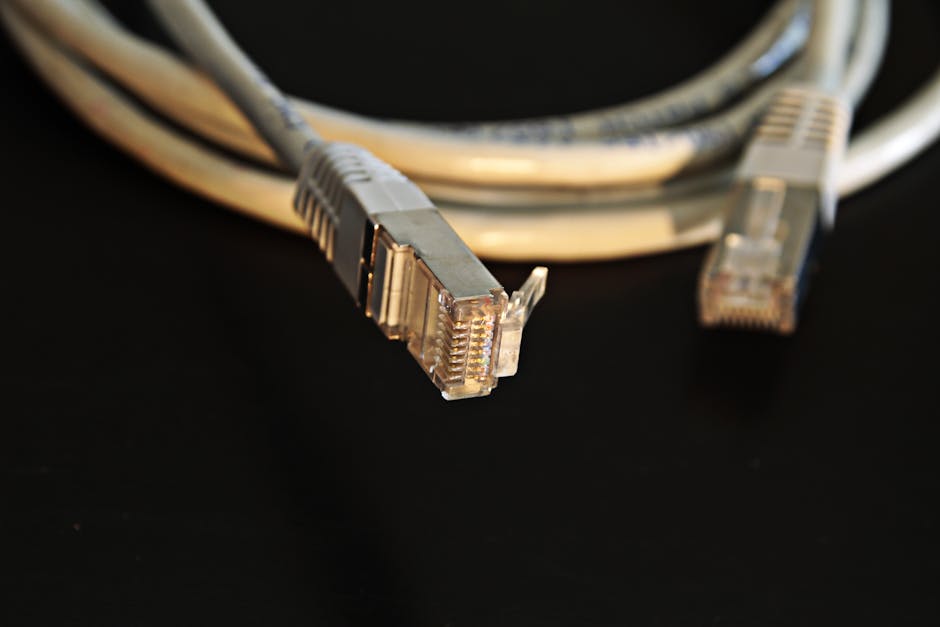
Introduction
Computer networking is a fundamental aspect of modern technology, allowing devices to connect and communicate with one another. At its core, networking involves the interconnection of computers, servers, and other devices to facilitate data exchange, resource sharing, and communication. Understanding the principles of computer networking is essential for anyone looking to delve into the IT field. Various components, such as routers, switches, and firewalls, play critical roles in establishing and maintaining a network. Additionally, networking protocols govern how data is transmitted across these interconnected devices, ensuring secure and efficient communication. As networks continue to evolve with advancements in technology, knowledge of networking principles remains vital for tackling challenges and leveraging opportunities in an increasingly digital world. This tutorial aims to provide clarity on the different types of computer networks and their specific topologies, which are the physical or logical arrangements of devices within a network. By exploring these concepts, readers will gain a foundational understanding of how data travels and how networks are structured to meet diverse needs.
Topologies are crucial for designing networks that effectively meet user requirements and performance expectations. The most common types of network topologies include star, ring, bus, mesh, and hybrid configurations. Each topology has its unique advantages and disadvantages related to factors such as scalability, fault tolerance, and cost-effectiveness. For instance, a star topology is known for its ease of installation and troubleshooting, as all devices connect to a central hub. In contrast, a bus topology utilizes a single central cable, making it a cost-effective solution but prone to data collision issues. Understanding these differences allows network designers to choose the most appropriate topology based on their specific needs. Moreover, as businesses grow and technology evolves, networks must be adaptable and resilient. This tutorial will delve into the characteristics and applications of each topology, providing readers with the knowledge needed to make informed decisions regarding network design and implementation. By mastering these concepts, individuals will be better equipped to create, manage, and optimize networks in various environments.
What You'll Learn
- Understand the fundamental concepts of computer networking.
- Identify different types of network topologies and their characteristics.
- Evaluate the advantages and disadvantages of various topologies.
- Learn how networking protocols facilitate communication between devices.
- Explore the roles of key networking components such as routers and switches.
- Develop skills to design and implement effective network solutions.
Table of Contents
Importance of Computer Networking

Understanding the Significance
Computer networking is fundamental to the modern digital landscape, enabling communication and data sharing among devices. The importance of networking cannot be overstated; it forms the backbone of business operations, education, and personal interactions. Effective computer networking allows organizations to connect geographically dispersed locations, facilitating real-time collaboration and information exchange. As businesses increasingly rely on technology, understanding the significance of networking becomes essential for efficiency and growth.
Moreover, computer networking supports the integration of cloud services, enhancing data accessibility and security. With a well-structured network, businesses can implement robust cybersecurity measures that protect sensitive information from unauthorized access. Additionally, networking technologies such as VPNs (Virtual Private Networks) ensure secure connections for remote workforces, which have become increasingly prevalent. By investing in sophisticated networking solutions, organizations can increase their operational efficiency while reducing costs associated with data management and communications.
In practical terms, consider a company that operates in multiple locations. By utilizing a comprehensive network, employees can share resources and collaborate on projects seamlessly. For example, video conferencing tools and shared cloud storage allow teams to work together in real-time, regardless of their physical location. This connectivity not only boosts productivity but also fosters innovation as employees can easily exchange ideas and collaborate on solutions.
- Enhances communication and collaboration
- Facilitates remote working capabilities
- Supports data sharing and resource management
- Enables scalability for growing businesses
- Improves data security and access control
| Feature | Description | Example |
|---|---|---|
| Scalability | Ability to expand network resources | Adding new devices in a corporate network |
| Security | Protection against unauthorized access | Using firewalls and encryption protocols |
| Collaboration | Tools for working together remotely | Video conferencing applications like Zoom |
| Resource Sharing | Accessing shared files and applications | Cloud storage platforms like Google Drive |
Types of Computer Networks

Exploring Different Network Types
Computer networks can be classified into various types, each serving distinct purposes and functionalities. Primarily, networks are categorized based on their geographical coverage: Local Area Networks (LAN), Wide Area Networks (WAN), and Metropolitan Area Networks (MAN). LANs cover small areas like offices or homes, while WANs span broader regions, connecting multiple LANs across cities or countries. Understanding these distinctions helps organizations select the appropriate network type based on their specific needs.
In addition to size, networks can also be differentiated based on their architecture, namely client-server and peer-to-peer models. Client-server networks centralize resources and services on a single server, facilitating easier management and security. Conversely, peer-to-peer networks distribute responsibilities among connected devices, allowing for direct communication without a centralized server. Each architecture has its advantages and challenges, and the choice depends on factors such as budget, scalability, and technical expertise.
Real-world applications illustrate these network types effectively. For instance, a small business may implement a LAN to connect all employee computers and printers, enhancing productivity. In contrast, multinational corporations often rely on WANs to connect their global offices, ensuring seamless communication and data sharing. Understanding these types enables businesses to optimize their networking strategies and choose the right technology stack for their operational needs.
- Local Area Network (LAN)
- Wide Area Network (WAN)
- Metropolitan Area Network (MAN)
- Wireless Local Area Network (WLAN)
- Virtual Private Network (VPN)
| Type | Coverage | Use Case |
|---|---|---|
| LAN | Small, localized area | Office network for sharing printers and files |
| WAN | Widespread geographic area | Connecting corporate offices across countries |
| MAN | City or large campus | Connecting multiple buildings in a university |
| WLAN | Wireless connections in a local area | Home Wi-Fi for personal devices |
Overview of Network Topologies
Understanding Network Layouts
Network topology refers to the arrangement of different elements in a computer network. It plays a crucial role in the network's performance, reliability, and scalability. Common topologies include star, bus, ring, and mesh. Each topology has its unique characteristics, advantages, and drawbacks that can impact the efficiency of data transmission and ease of troubleshooting. Understanding these topologies is essential for designing a resilient and effective network.
The star topology is one of the most widely used designs, where all devices connect to a central hub or switch. This configuration simplifies management and troubleshooting since a failure in one connection does not affect the entire network. In contrast, bus topology connects all devices along a single cable, making it cost-effective for small networks but prone to performance issues as more devices are added. Ring topology, where each device is connected to two others in a closed loop, can provide consistent performance but may lead to network failure if one device fails.
In practice, the choice of topology can significantly influence organizational outcomes. For example, a small office might implement a star topology to facilitate easy management and quick troubleshooting. However, a large corporation with significant redundancy requirements may opt for a mesh topology to ensure that multiple connections exist between devices, thereby enhancing reliability. By understanding the strengths and weaknesses of each topology, organizations can tailor their network designs to meet specific operational goals.
- Star Topology
- Bus Topology
- Ring Topology
- Mesh Topology
- Hybrid Topology
| Topology | Description | Advantages |
|---|---|---|
| Star | All devices connect to a central hub | Easier management and troubleshooting |
| Bus | Devices share a single communication line | Cost-effective for small networks |
| Ring | Devices connected in a circular format | Consistent data flow but vulnerable to failure |
| Mesh | Multiple connections between devices | High reliability and redundancy |
Star Topology: Features and Benefits

Overview of Star Topology
Star topology is a network configuration where all nodes are connected to a central hub or switch. This design facilitates easy management and monitoring of the network. The central hub acts as a repeater for data flow, ensuring that signals are transmitted efficiently to their intended destinations. One of the key strengths of star topology is its scalability; adding new devices to the network is straightforward and typically involves only connecting to the central hub, making it a favored choice for both small and large organizations.
In a star topology, if one connection fails, it only impacts the individual device connected to that port, not the entire network. This isolation of failures enhances network reliability and minimizes downtime. Additionally, the centralized nature of star topology simplifies troubleshooting, as network administrators can quickly identify and address issues at the hub. This method also allows for easier upgrades and expansions, as new hardware can often be integrated without significant disruptions to existing operations.
Real-world applications of star topology are prevalent in office environments where multiple computers, printers, and servers need to communicate effectively. For instance, a business can use a star topology to connect all its workstations to a central router, which manages internet access and internal communication. This setup not only improves performance but also allows for easier implementation of network security measures, such as firewalls, since all traffic passes through a single point.
- Easy to identify faults due to centralized management
- Scalability allows for straightforward network expansion
- Isolated failures prevent network-wide outages
- Simplified installation and configuration
- Enhanced security through centralized control
| Feature | Description | Example |
|---|---|---|
| Centralized Management | All nodes connect to a central hub. | Easier fault identification. |
| Scalability | Simple to add new devices. | Adding printers or PCs without network disruption. |
| Fault Isolation | Failure of one connection doesn't affect others. | One PC failure doesn't take down the entire network. |
Bus Topology: Characteristics and Usage

Understanding Bus Topology
Bus topology is a network configuration where all devices share a single communication line or cable, known as the bus. This design is cost-effective, as it requires less cabling compared to other topologies. In a bus topology, data packets travel along the bus in both directions until they reach their destination. Although it is relatively simple to set up, this topology can be challenging to scale and maintain, primarily due to its reliance on a single cable for data transmission.
One of the main characteristics of bus topology is its susceptibility to collisions, which can occur when devices transmit data simultaneously. When collisions happen, data packets are lost, requiring retransmission, which can slow down the network. Moreover, if the main cable (the bus) fails, the entire network becomes inoperable, making troubleshooting more complex. To mitigate these issues, terminators are used at each end of the bus to absorb signals, preventing reflections that could lead to errors.
Bus topology is often used in smaller networks, such as home networks or small businesses that require basic connectivity without extensive infrastructure. For example, a small office might implement a bus topology using coaxial cable to connect computers and printers. While it may be suitable for limited use, organizations looking to expand their networks should consider transitioning to more robust topologies to ensure reliability and performance.
- Cost-effective due to reduced cabling requirements
- Easier to set up for small networks
- Requires terminators to prevent data loss
- Limited scalability for larger environments
- Susceptible to data collisions
| Characteristic | Description | Example |
|---|---|---|
| Single Cable System | All devices share a single communication line. | Basic setup for a small office. |
| Collision Risk | Data collisions occur when two devices transmit simultaneously. | Can slow down network performance. |
| Dependence on Cable | Failure of the main bus disrupts the entire network. | Single point of failure for connectivity. |
Ring Topology: Structure and Applications
Exploring Ring Topology
Ring topology is a network configuration in which each device is connected to two other devices, forming a circular pathway for data transmission. This structure allows data to travel in one direction, reducing the chances of data collisions. The simplicity of this design can be advantageous for certain applications, as it provides a straightforward method for transmitting data packets from one device to another in a predictable manner.
One of the notable characteristics of ring topology is that if one device fails, it can disrupt the entire network unless a dual ring configuration is used. In a single ring, the failure of a node or connection can sever the communication path, leading to network downtime. To combat this, many modern implementations utilize dual rings, allowing data to flow in both directions and enhancing fault tolerance. This design helps maintain network integrity, ensuring continuity even if one part of the network fails.
Ring topology is often applied in environments where stable and predictable data transfer is essential, such as in telecommunications and manufacturing processes. For example, a manufacturing plant may use a ring topology to connect various machines and sensors, allowing for real-time data exchange and monitoring. This setup ensures that all devices are consistently in sync, critical for operations that depend on precise timing and coordination.
- Predictable data transmission due to unidirectional flow
- Reduced collision risk compared to bus topology
- Requires careful management of device failures
- Dual ring configurations enhance reliability
- Ideal for real-time applications and monitoring
| Aspect | Description | Example |
|---|---|---|
| Unidirectional Data Flow | Data travels in one direction around the ring. | Reduces the risk of collisions. |
| Fault Tolerance | Dual rings can provide redundancy. | Maintains network integrity during device failures. |
| Real-Time Applications | Used in environments needing quick data exchange. | Manufacturing plants for machine synchronization. |
Choosing the Right Topology for Your Network
Understanding Network Requirements
Selecting the right network topology is crucial for optimizing performance and scalability. The first step in this process is to thoroughly understand the specific requirements of your network environment. Consider factors such as the size of your organization, the number of devices to be connected, and the nature of the data traffic. For instance, a small office with limited devices may benefit from a simpler topology, like a star or bus, while a larger organization with high data traffic might require a more complex structure, such as a mesh topology, that can handle increased load without compromising speed or reliability.
Once you have assessed your network requirements, it is essential to analyze the advantages and disadvantages of each topology type. For example, while a star topology is easy to set up and manage, it relies heavily on a central hub, making it vulnerable to a single point of failure. In contrast, a mesh topology increases reliability by allowing multiple pathways for data to travel, but it can be more expensive and complex to implement. By weighing these factors, you can make an informed decision about which topology aligns best with your organization's goals and resources.
In practical terms, consider a company that frequently experiences downtime due to network failures. By transitioning to a mesh topology, they can enhance their redundancy and ensure continuous network availability. Conversely, a startup with limited budget and fewer devices might find a star topology not only cost-effective but also easy to expand as they grow. Evaluating past experiences and current needs will help you choose the topology that maximizes both efficiency and cost-effectiveness.
- Assess the number of devices and users in your network.
- Evaluate the types of applications and services to be run.
- Consider budget constraints and long-term scalability.
- Analyze potential points of failure and required redundancy.
| Topology | Pros | Cons |
|---|---|---|
| Star | Easy to set up; centralized management | Single point of failure; hub dependency |
| Bus | Cost-effective; simple installation | Limited length; performance degrades with more devices |
| Mesh | High reliability; multiple data paths | Expensive; complex wiring |
| Ring | Predictable performance; easy troubleshooting | Failure of one device can disrupt the network |
| Hybrid | Flexible; can combine the benefits of different topologies | Complex design; can be expensive to maintain |
Frequently Asked Questions
What are the best practices for setting up a home network?
To set up a home network effectively, start by selecting a suitable router that matches your internet needs. Ensure your router supports the latest Wi-Fi standards for better performance. Position the router in a central location for optimal coverage. Use strong passwords and security protocols like WPA3 to protect your network from unauthorized access. Regularly update your router's firmware to fix vulnerabilities and improve functionality.
How do I troubleshoot network connectivity issues?
Begin troubleshooting by checking if the issue is with your device or the network itself. Restart your device and router to refresh connections. Check cables and connections for any physical damage or loose links. Use diagnostic tools available in your operating system to identify potential issues. If the problem persists, contacting your Internet Service Provider (ISP) may be necessary to check for outages or service interruptions.
What is the difference between wired and wireless networks?
Wired networks use physical cables to connect devices, providing stable and faster connections, making them ideal for bandwidth-intensive tasks. Wireless networks use radio waves, offering flexibility and mobility, but may be susceptible to interference and security risks. Choosing between the two depends on your needs: for stable, high-speed connections, wired networks are preferable, while wireless networks offer convenience for mobile devices.
How can I improve my network speed?
To enhance network speed, start by checking your router’s placement and ensuring it is not obstructed by walls or furniture. Limit the number of connected devices during peak usage times as congestion can slow down speeds. Regularly update your networking equipment and consider upgrading to a higher-speed internet plan if needed. Additionally, using Ethernet connections for devices that require high bandwidth can greatly improve performance.
What types of network topologies are best for small businesses?
For small businesses, the star topology is often the best choice due to its ease of installation and maintenance. It allows for quick troubleshooting since devices are connected to a central hub. However, if redundancy is a concern, a hybrid topology that combines elements of star and mesh may be beneficial, providing both reliability and ease of access to network resources.
Conclusion
In summary, understanding computer networking and its various topologies is crucial for building efficient and effective communication systems. We have explored the main types of network topologies, including star, bus, ring, mesh, and hybrid configurations. Each topology has its distinct advantages and disadvantages, impacting performance, scalability, and fault tolerance. The star topology, for example, is favored for its simplicity and ease of troubleshooting, while a mesh topology offers enhanced redundancy and reliability. Additionally, the choice of networking hardware, such as switches, routers, and hubs, plays a significant role in the overall performance of a network. As technology continues to evolve, so too do the methodologies for organizing and managing network structures, which can directly affect organizational productivity and efficiency. Knowledge of these concepts not only aids in designing robust networks but also prepares professionals to adapt to future advancements in networking technologies.
Key takeaways from this discussion include the importance of selecting the right topology based on specific use cases and needs. Begin by assessing the size and requirements of your network before deciding on a topology. For instance, smaller networks may benefit from a star topology due to its ease of setup and management, while larger organizations might opt for mesh configurations to ensure high availability and fault tolerance. As you implement networking solutions, consider investing in high-quality hardware and maintaining regular updates to network devices. Additionally, familiarize yourself with emerging trends such as Software-Defined Networking (SDN) and network virtualization, as they are reshaping modern networking. Taking these steps will equip you to build efficient networks that can grow and adapt alongside technological advancements.
Further Resources
- Cisco Networking Academy - This free resource offers courses on networking fundamentals, including topology types and best practices in networking. It's ideal for beginners and professionals looking to enhance their skills.
- Network Computing - An excellent resource for articles and guides on various networking topics. It provides insights into the latest technologies, trends, and best practices in networking.